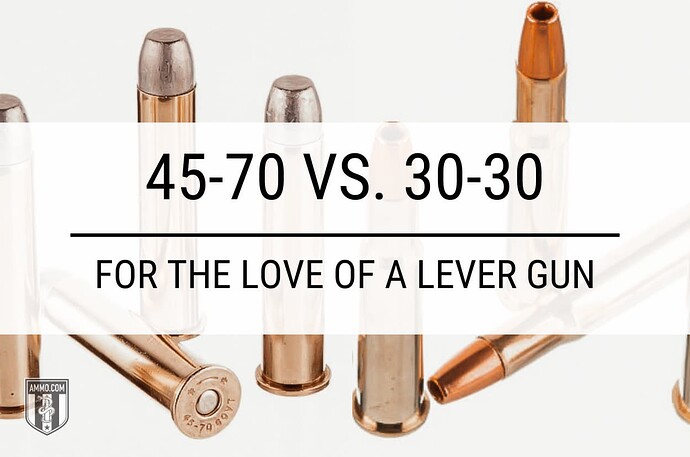There’s something deliciously nostalgic about lever-action rifles. They have an aura and mystique about them, especially when you use one as a hunting rifle. It’s as though you’ve been transported back to a simpler time when the big game freely roamed the forests and Great Plains of North America.
There are many rifle cartridges you can select if you want to pick up a lever gun. Two of the most popular are the 30-30 Winchester and the 45-70 Government.
The 45-70 is a big, beefy cartridge that hits hard and has the power to take down a grizzly. The 30-30 is lighter, more nimble, and a lot gentler on the shoulder.
Both cartridges have a long and impressive history of getting the job done when it comes to putting meat on the table. But which one is right for you?
In this article, we will analyze the rounds’ relative advantages and disadvantages so you can make the best decision on your next lever-action hunting rifle.
What’s the Difference Between 45-70 vs. 30-30?
The primary difference between 45-70 vs. 30-30 is that the 30-30 Win cartridge fires a 0.308” diameter bullet while the 45-70 Govt fires a 0.458” diameter bullet. Both cartridges can be used on medium game like whitetail, hogs, or black bear, but the 45-70 can take on big game animals like brown bear, bison, and moose.
Cartridge Specs
When comparing two rifle cartridges, it’s a good idea to gain more knowledge of each by analyzing the cartridges’ specs.
The first and most obvious difference between 45-70 and 30-30 is the size of the bullet each fires. The 45-70 fires a 0.458” diameter bullet, while the 30-30’s 0.308” diameter bullet makes it a true American .30 caliber. This means the 45-70 Govt fires larger, heavier bullets than the 30-30.
Another significant difference between the two cartridges is their size. The 45-70 is wider (albeit the same length). Their designs are different as well, as the 45-70 has a straight-walled case while the 30-30’s is bottle-necked (like the 223 Remington).
The larger 45-70 has almost double the case capacity of the 30-30 (81 vs. 45 grains, respectively). Its larger case capacity is needed for launching the 300+ grain weight boulders – or, rather, bullets – the 45-70 fires.
There’s no denying that the 45-70 is a monster of a round, but all that power comes at the cost of greater recoil.
There’s no denying that the 45-70 is a monster of a round, but all that power comes at the cost of felt reoil.
Recoil
Felt recoil varies depending on the shooter and rifle. A heavier rifle has less felt recoil than a lighter one, as its greater mass absorbs more recoil energy.
On average, the 30-30 has around 14 ft-lbs of recoil energy, whereas the 45-70 imparts around 33 ft-lbs of energy to a shooter’s shoulder. That’s over double!
Most shooters utilize these rounds for deer hunting and other big game. Recoil should therefore not be a huge issue, as most hunters take one or two shots tops during a trip into the woods. Even so, the 30-30 is the superior choice as far as recoil is concerned.
Continue reading 45-70 vs. 30-30: For the Love of a Lever Gun on Ammo.com

